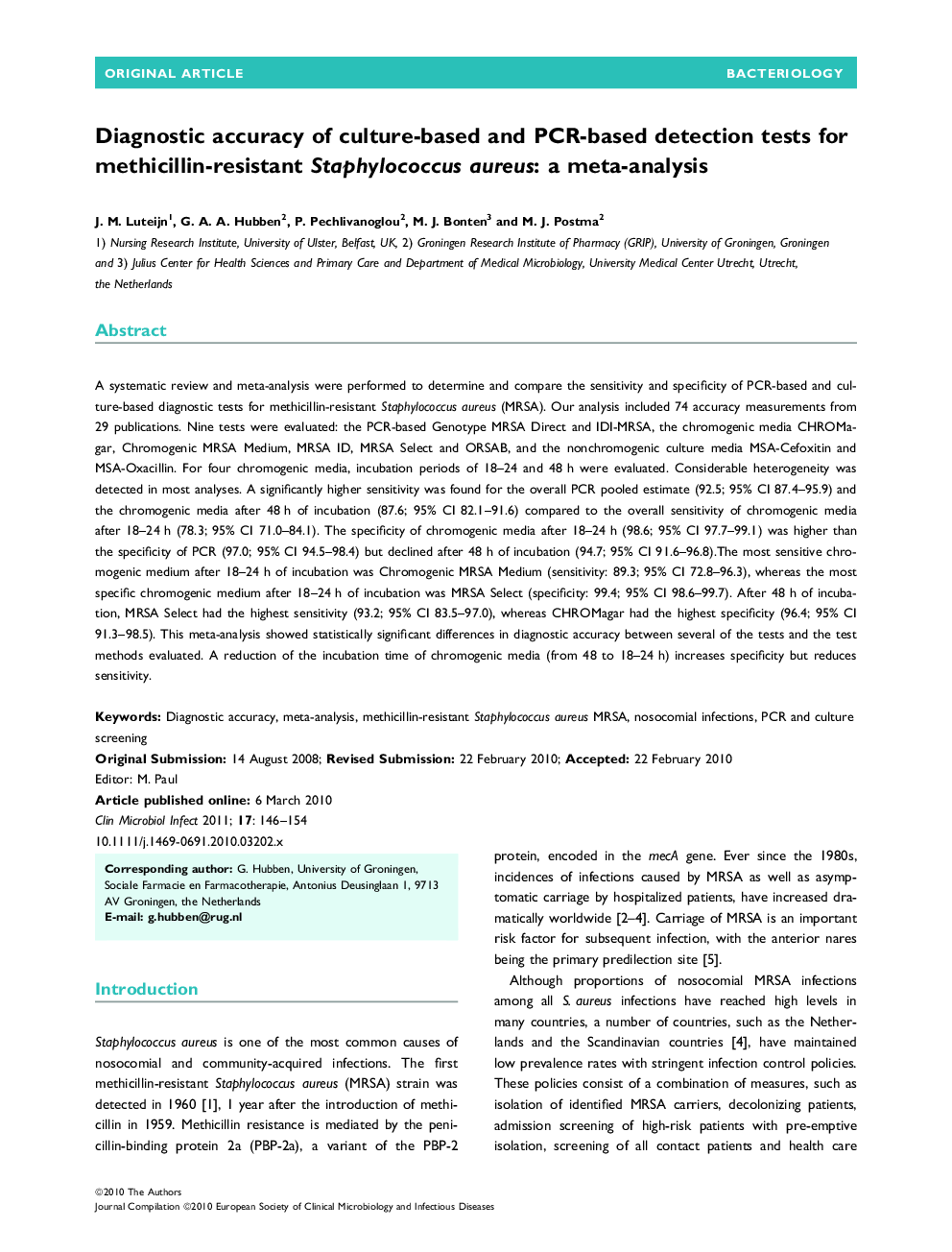| Article ID | Journal | Published Year | Pages | File Type |
|---|---|---|---|---|
| 3397113 | Clinical Microbiology and Infection | 2011 | 9 Pages |
A systematic review and meta-analysis were performed to determine and compare the sensitivity and specificity of PCR-based and culture-based diagnostic tests for methicillin-resistant Staphylococcus aureus (MRSA). Our analysis included 74 accuracy measurements from 29 publications. Nine tests were evaluated: the PCR-based Genotype MRSA Direct and IDI-MRSA, the chromogenic media CHROMagar, Chromogenic MRSA Medium, MRSA ID, MRSA Select and ORSAB, and the nonchromogenic culture media MSA-Cefoxitin and MSA-Oxacillin. For four chromogenic media, incubation periods of 18–24 and 48 h were evaluated. Considerable heterogeneity was detected in most analyses. A significantly higher sensitivity was found for the overall PCR pooled estimate (92.5; 95% CI 87.4–95.9) and the chromogenic media after 48 h of incubation (87.6; 95% CI 82.1–91.6) compared to the overall sensitivity of chromogenic media after 18–24 h (78.3; 95% CI 71.0–84.1). The specificity of chromogenic media after 18–24 h (98.6; 95% CI 97.7–99.1) was higher than the specificity of PCR (97.0; 95% CI 94.5–98.4) but declined after 48 h of incubation (94.7; 95% CI 91.6–96.8). The most sensitive chromogenic medium after 18–24 h of incubation was Chromogenic MRSA Medium (sensitivity: 89.3; 95% CI 72.8–96.3), whereas the most specific chromogenic medium after 18–24 h of incubation was MRSA Select (specificity: 99.4; 95% CI 98.6–99.7). After 48 h of incubation, MRSA Select had the highest sensitivity (93.2; 95% CI 83.5–97.0), whereas CHROMagar had the highest specificity (96.4; 95% CI 91.3–98.5). This meta-analysis showed statistically significant differences in diagnostic accuracy between several of the tests and the test methods evaluated. A reduction of the incubation time of chromogenic media (from 48 to 18–24 h) increases specificity but reduces sensitivity.
